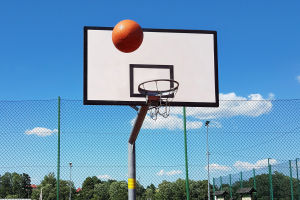Ever watched a football match and felt totally lost when the commentators threw out words like “banana shot” or “hat trick”? Don't worry—we've got your back!
Today we're diving into the most common football terms so we can all sound like pros next time we're watching a game. Let's go!
Offside
This rule is all about positioning. When a player receives a pass and they're closer to the opponent's goal than the second-last defender at the moment the ball is kicked—boom, that's offside.
If someone scores while offside, the goal doesn't count. It's a key rule to keep the game fair and stop players from just hanging out near the goal waiting for an easy score.
Two Goals in One Match
When a player scores two goals in a single game, we call it a “brace.” It shows the player is really on fire that day. Score three? That's called a “hat trick.” And if someone nets four, that's a “super four.” But none of these count if they happen during a penalty shootout to decide the winner.
Corner Kick
If the defending team touches the ball last before it crosses the goal line (without scoring), the attacking team gets a corner kick. The ball is placed inside a small arc near the corner of the field, and the defenders must stay at least 10 yards away until it's kicked. Fun fact—goals can be scored directly from a corner!
Penalty Kick
This is a one-on-one showdown. If a defender fouls inside the penalty area, the attacking team gets a shot from the penalty spot, with only the goalie to stop it.
In knockout matches, if the score is tied after extra time, teams go into a penalty shootout, where players take turns trying to score from the penalty spot to determine the winner.
Own Goal
Oops! Sometimes players accidentally score into their own net. This is called an “own goal,” and unfortunately, it gives the other team a point. It's one of the most heartbreaking moments for any footballer.
World-Class Goal
When a player scores from a long distance or makes a shot that leaves everyone stunned, we call it a “world-class goal.” These are the jaw-dropping moments we love to replay again and again.
Banana Shot
Also known as a curved shot, this technique makes the ball spin in a way that curves its path. It's mostly used in free kicks near the goal—bending the ball around the wall of defenders to sneak it into the net. Pretty cool, right?
Diving Header
This move is when a player throws themselves forward like a dolphin and heads the ball mid-air. It's a flashy way to score and often gets the crowd roaring.
Side Dive Save
For goalkeepers, this is a high-skill move. They push off with one foot and leap sideways to block a shot. It takes great timing and guts—and when it works, it looks amazing.
Down-the-Line Cross
This is a strategy where a winger dribbles the ball deep along the sideline, right near the opponent's end line, and then crosses it into the penalty box to a teammate. It's a smart way to create scoring chances.
45-Degree Cross
Also called an angled cross, this happens when a player is near the sideline at about a 45-degree angle to the goal and kicks the ball high into the penalty area. Teammates usually try to head the ball in from there.
Switching Positions
This tactic helps confuse defenders. Two attacking players switch spots while running, making it harder for defenders to keep track of them. It's simple, but super effective.
Anti-Offside Strategy
Some teams try to “trap” attackers in an offside position. To beat that, the attacking side uses this trick: instead of passing to the player up front, they send the ball to someone charging from behind or dribble fast to get around the trap. Smart, right?
Human Wall
When the defending team lines up shoulder to shoulder to block a free kick, it's called building a “wall.” This gives the goalie more help in blocking a shot and makes life harder for the kicker.
Wall-Pass Play
This is a quick one-two pass between two teammates to zip around a defender. It's called a “wall pass” because the ball bounces back like it hit a wall. Fast, sharp, and super effective in tight spaces.
Free Agent (a.k.a. Sweeper)
In older formations, a “sweeper” or “free agent” didn't stick to one player to mark. They floated behind the defense line, ready to clean up any threats or jump into attack if needed. These players need brains, skill, and big-picture thinking.
The Cleaner
Also known as the “last man” in defense, the cleaner's only job is to stop anything that gets past the rest of the defense. No attacking—just focus on blocking shots, clearing balls, and protecting the goal at all costs.
Butterfingers
This cheeky nickname is for goalkeepers who often fumble or drop the ball. It's like their hands are coated in butter! It's a playful way of saying they need to work on their grip.
Lykkers, how many of these football terms did you already know? Next time you're watching a match, listen closely and see how many you can spot. You might just impress your friends—or even yourself! Let us know which term was the most surprising or fun for you to learn!

